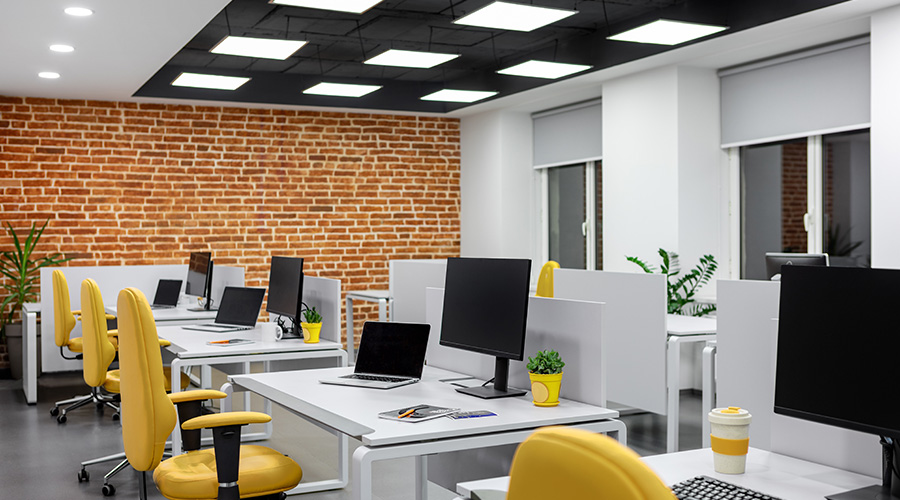Growing Number of Mobile Workers Affecting Real Estate Footprint, Systems Furniture
With the economic recession squeezing many company’s real estate footprints combined with recent technological advances in IT and telecom, more and more office workers are going mobile. They work from home — or coffee shops, subway trains, or anywhere else for that matter — equipped with laptops, cell phones and bags or briefcases with a few archaic essentials (pencil, anyone?). When they do come into the office, they often share a communal desk or touchdown station designed to accommodate any worker on any given day.
Mobile work has become so prevalent that companies that have tracked their office utilization statistics have often found that only 50 to 60 percent of workers even come into the building on any given day, says Gervais Tompkin, director of workplace strategy for Gensler. When you add up all the expenses to house a typical office worker — real estate, utilities, furniture, etc. — the average per person per year is around $8,000, says Tompkin. “If you’ve got 40 percent of your people not coming into your office, that’s millions of dollars a year in the case of large companies.”
Companies that are implementing mobile work programs need to examine their current office furniture to avoid wasting expenses on space that’s no longer needed. To start, Tompkin recommends using a new metric to measure density. The old school metric measured how many desks or seats per square foot on a ratio of one employee to one desk. In the average mid-cap company 10 years ago, he says, the average was 250 square feet per seat. Nowadays, to account for the large number of workers out of the office, it’s better to measure square feet of space per headcount employed, says Tompkin. Counting all employees, not just the ones in the office on any given day, adjusts for the new ratio of employee per desk. With this metric, some companies that have implemented effective mobile programs are seeing metrics of 30 to 50 square feet of space per worker employed. That’s a big difference.
That doesn’t mean, however, that office workers without their own personal “cube” are unhappy. Just the opposite, says Tompkin. Initially, there may be a decline in job satisfaction when a mobile program is implemented and furniture configured accordingly, but it is usually followed by a steep increase in satisfaction once workers adapt to the new arrangement. In many companies, a mobile work program actually becomes an incentive and benefit for many workers who enjoy the flexibility a mobile work program allows.
Related Topics:












